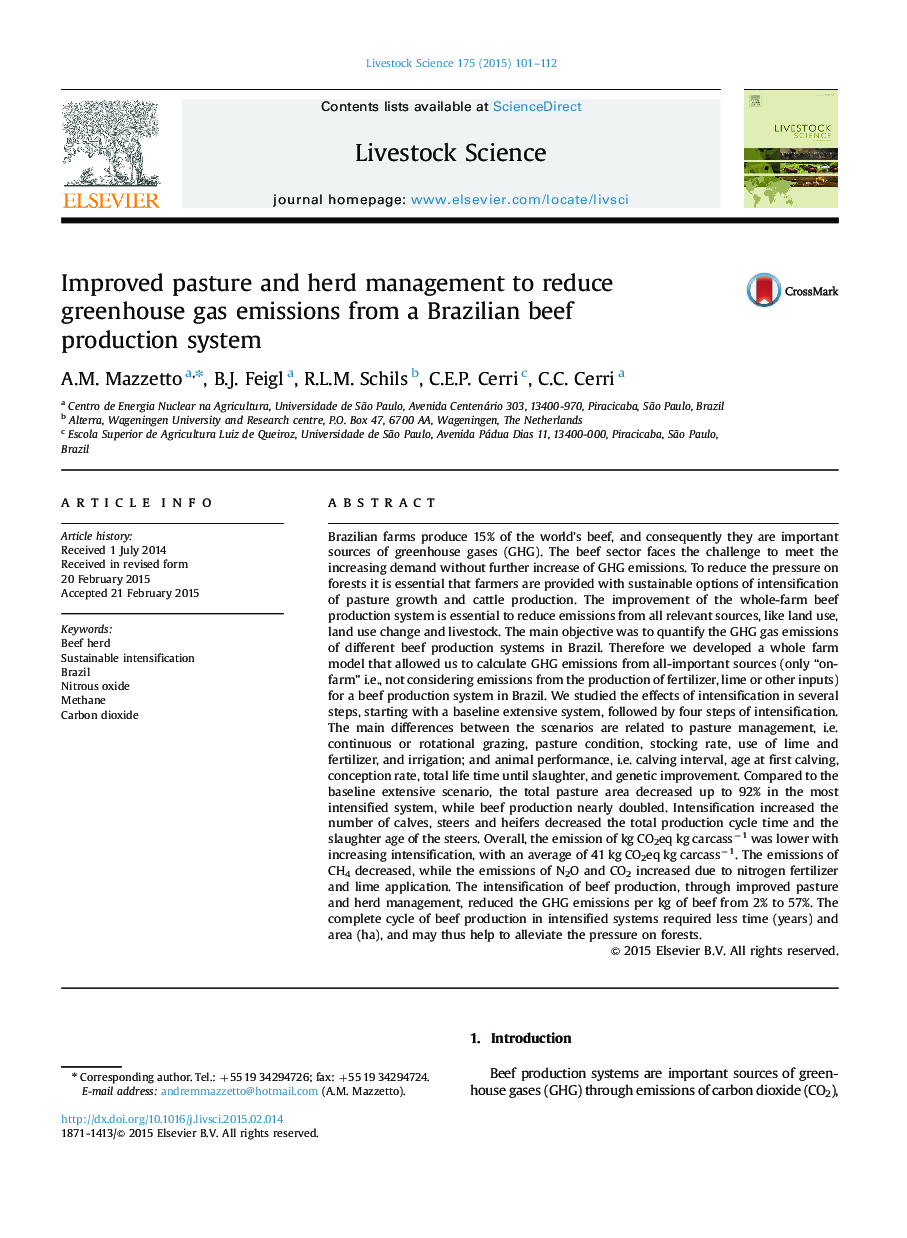| کد مقاله | کد نشریه | سال انتشار | مقاله انگلیسی | نسخه تمام متن |
|---|---|---|---|---|
| 2447134 | 1553957 | 2015 | 12 صفحه PDF | دانلود رایگان |
• The intensification of beef production reduces the GHG emissions per unit of beef
• Results showed that the decrease in CH4 emission outweighs the increase of N2O and CO2 from application of nitrogen fertilizer and lime.
• The beef production in intensified systems required less time and area.
• The intensification steps simulated in this study can be considered as combined sets of mitigation options.
Brazilian farms produce 15% of the world׳s beef, and consequently they are important sources of greenhouse gases (GHG). The beef sector faces the challenge to meet the increasing demand without further increase of GHG emissions. To reduce the pressure on forests it is essential that farmers are provided with sustainable options of intensification of pasture growth and cattle production. The improvement of the whole-farm beef production system is essential to reduce emissions from all relevant sources, like land use, land use change and livestock. The main objective was to quantify the GHG gas emissions of different beef production systems in Brazil. Therefore we developed a whole farm model that allowed us to calculate GHG emissions from all-important sources (only “on-farm” i.e., not considering emissions from the production of fertilizer, lime or other inputs) for a beef production system in Brazil. We studied the effects of intensification in several steps, starting with a baseline extensive system, followed by four steps of intensification. The main differences between the scenarios are related to pasture management, i.e. continuous or rotational grazing, pasture condition, stocking rate, use of lime and fertilizer, and irrigation; and animal performance, i.e. calving interval, age at first calving, conception rate, total life time until slaughter, and genetic improvement. Compared to the baseline extensive scenario, the total pasture area decreased up to 92% in the most intensified system, while beef production nearly doubled. Intensification increased the number of calves, steers and heifers decreased the total production cycle time and the slaughter age of the steers. Overall, the emission of kg CO2eq kg carcass−1 was lower with increasing intensification, with an average of 41 kg CO2eq kg carcass−1. The emissions of CH4 decreased, while the emissions of N2O and CO2 increased due to nitrogen fertilizer and lime application. The intensification of beef production, through improved pasture and herd management, reduced the GHG emissions per kg of beef from 2% to 57%. The complete cycle of beef production in intensified systems required less time (years) and area (ha), and may thus help to alleviate the pressure on forests.
Journal: Livestock Science - Volume 175, May 2015, Pages 101–112
